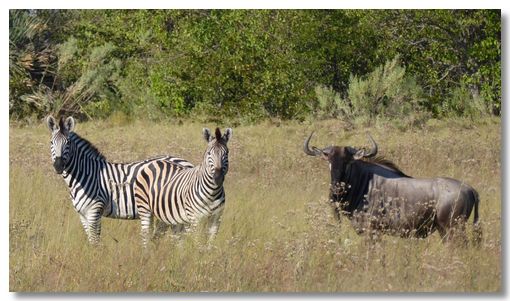In early May we embarked on our Botswana Safari. As part of the holiday organised by KE Adventure, we flew into Johannesburg for 2 nights before driving off in our "big Red Bus" to Serowe staying in the Kharma Rhino Sanctuary. From there we drove to Maun as the stop-over for the 2 night tented stay in the Okavango Delta. The following 3 night stay by the Moremi Game Reserve was possibly the highlight of the holiday - superb accommodation, beautiful scenery & exciting game drives. The excursion to Nata to see the Makgadikgadi salt pans was a disappointment - there had been too much rain, hence no salt pans to experience (the equivalent salt pans of Etosha in our 2005 Namibian safari were the highlight of that holiday). Chobe was the final Nature Reserve we visited which included a river cruise to see the wildlife. Leaving Botswana we travelled the short distance to cross the border into Zimbabwe to see the mighty Victoria Falls.
Within Botswana the game viewing is strictly controlled in both the state-run National Parks as well as the surrounding privately run game reserves. Whichever type of park/reserve we were in, the wildlife was very well managed and we were very impressed with the country and the people we met. This was in contrast to the South Africa & Zimbabwe countries that book-ended our holiday. Personal safety was an issue in Joburg & desperate poverty was evident in Zimbabwe's Victoria Falls.
Overall in this holiday we had six drive safaris, two walking safaris (in the Okavango Delta), three long punts in the Delta as well as a Chobe River cruise. We saw the "Big Five" in Botswana with the only slight disappointment being not seeing a fully mature male lion (though we did hear the roars of one nearby).
I hadn't realised where the expression the "Big Five" came from until this holiday.
According to Wikipedia:- the big five game animals are the lion, leopard, rhinoceros, elephant, and Cape buffalo. The term "Big Five" was coined by big-game hunters and refers to the five most difficult animals in Africa to hunt on foot. Subsequently the term was adopted by safari tour operators for marketing purposes. The members of the Big Five were chosen for the difficulty in hunting them and the degree of danger involved, rather than their size.





